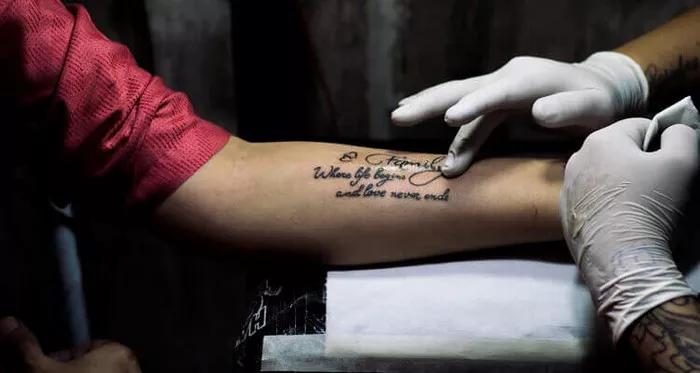Tattoos have become a mainstream form of self-expression, with millions of people worldwide adorning their bodies with intricate designs and meaningful symbols. While the end result can be beautiful, the process of getting a tattoo can often be accompanied by varying degrees of discomfort or pain. However, with the right techniques and preparation, it’s possible to ease the pain and make the tattooing experience more bearable. In this comprehensive guide, we’ll explore a variety of strategies to help minimize pain during tattoo sessions, ensuring a more enjoyable and satisfying experience for both the client and the tattoo artist.
Understanding the Nature of Tattoo Pain
Before delving into strategies for minimizing tattoo pain, it’s essential to understand the nature of the discomfort associated with the process. Tattoo pain is subjective and can vary significantly from person to person, depending on factors such as individual pain tolerance, the location of the tattoo, and the size and complexity of the design. Additionally, the sensation of pain during tattooing is not constant but rather fluctuates throughout the session, with some areas being more sensitive than others.
The pain experienced during tattooing is primarily attributed to the penetration of the skin by the tattoo needle, which delivers pigment into the dermis layer. This process stimulates nerve endings, triggering pain signals to the brain. However, the sensation is not purely pain; it can also be described as a combination of discomfort, pressure, and irritation.
Preparing Mentally and Physically
One of the most effective ways to minimize tattoo pain is through proper mental and physical preparation. Here are some steps to consider before your tattoo session:
1. Choose the Right Artist: Selecting a skilled and experienced tattoo artist can make a significant difference in your overall experience. Research artists thoroughly, view their portfolios, and read reviews to ensure you’re comfortable with their style and expertise.
2. Stay Hydrated: Dehydration can amplify the sensation of pain, so be sure to drink plenty of water in the days leading up to your appointment. Avoid excessive caffeine and alcohol consumption, as they can contribute to dehydration.
3. Get Adequate Rest: Ensure you’re well-rested before your tattoo session to help manage pain more effectively. Fatigue can lower pain tolerance and make the experience more uncomfortable.
4. Eat a Nutritious Meal: Fueling your body with a balanced meal before your appointment can help stabilize blood sugar levels and provide energy for the session. Avoid consuming heavy or spicy foods that may cause discomfort during tattooing.
5. Practice Relaxation Techniques: Consider incorporating relaxation techniques such as deep breathing, meditation, or visualization exercises to help calm your nerves and reduce anxiety before and during the tattoo session.
6. Choose the Right Placement: Some areas of the body are more sensitive than others, so carefully consider the placement of your tattoo. Areas with more muscle and fat tend to be less painful, while areas with thin skin and prominent bones may be more sensitive.
During the Tattoo Session
Once you’re in the tattoo studio and ready to begin, there are several strategies you can employ to help manage pain during the session:
1. Communicate with Your Artist: Establish open communication with your tattoo artist and let them know if you’re experiencing significant discomfort or pain during the session. They can adjust their technique, take breaks, or offer suggestions to help make the process more bearable.
2. Focus on Your Breathing: Concentrate on taking slow, deep breaths throughout the tattooing process. Deep breathing can help relax your body and distract your mind from the sensation of pain.
3. Engage in Distraction Techniques: Bring along distractions such as music, podcasts, audiobooks, or a handheld stress ball to occupy your mind and divert your attention away from the pain.
4. Numb the Skin: Topical numbing creams containing lidocaine or benzocaine can help temporarily numb the skin and reduce pain during tattooing. Apply the cream to the tattoo area at least 30 minutes before your appointment, following the instructions provided by your tattoo artist or pharmacist.
5. Take Breaks as Needed: Don’t hesitate to request short breaks during the tattoo session if you’re feeling overwhelmed by pain or discomfort. Use the opportunity to stretch, hydrate, and regain your composure before continuing.
6. Stay Relaxed and Calm: Tension in the body can exacerbate pain, so make a conscious effort to relax your muscles and maintain a calm demeanor throughout the session. Practice mindfulness techniques to stay present and focused on the experience without dwelling on discomfort.
Aftercare and Pain Management
Once your tattoo is complete, proper aftercare is essential for promoting healing and minimizing discomfort. Follow your tattoo artist’s instructions carefully, which may include:
1. Keep the Tattoo Clean and Moisturized: Wash the tattoo gently with mild soap and water, then apply a thin layer of fragrance-free moisturizer to keep the skin hydrated and promote healing.
2. Avoid Sun Exposure: Protect your new tattoo from direct sunlight and tanning beds, as UV radiation can cause fading and irritation. Apply sunscreen with a high SPF to the tattooed area when exposed to the sun.
3. Avoid Submerging in Water: Refrain from swimming or soaking in hot tubs until the tattoo is fully healed to prevent infection and irritation.
4. Manage Discomfort with Over-the-Counter Pain Relievers: If you experience lingering discomfort or soreness after the tattoo session, you can take over-the-counter pain relievers such as ibuprofen or acetaminophen as directed.
Conclusion
While getting a tattoo may involve some degree of discomfort or pain, there are numerous strategies available to help minimize these sensations and make the experience more tolerable. By preparing mentally and physically, communicating with your tattoo artist, and employing relaxation techniques during the session, you can ease the pain and focus on the excitement of adding a new piece of art to your body. Remember to prioritize proper aftercare to ensure optimal healing and long-lasting results. With careful planning and attention to detail, your tattooing experience can be both enjoyable and rewarding.

